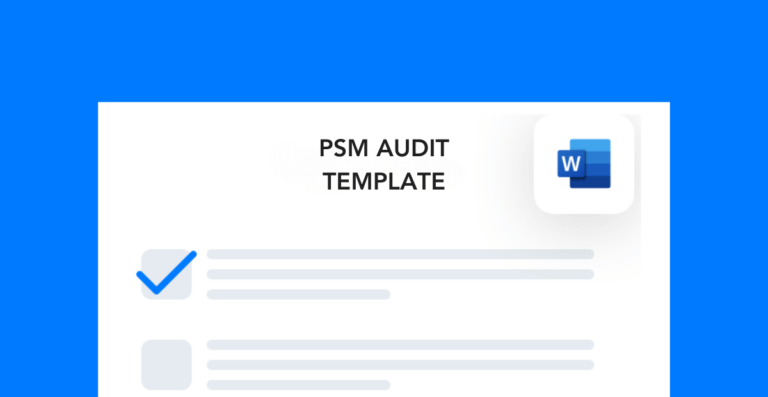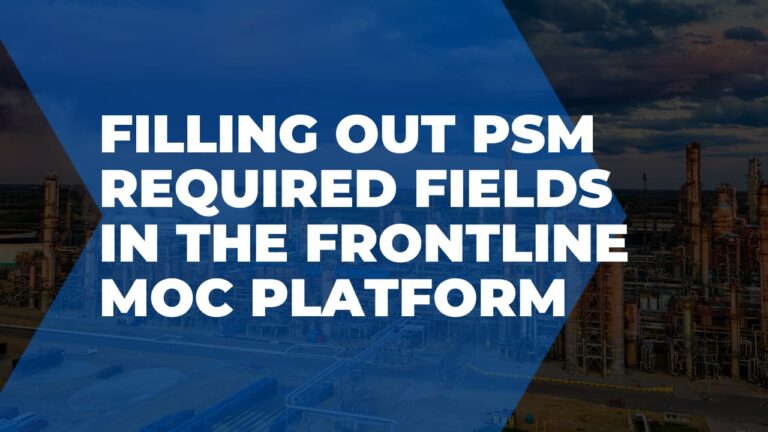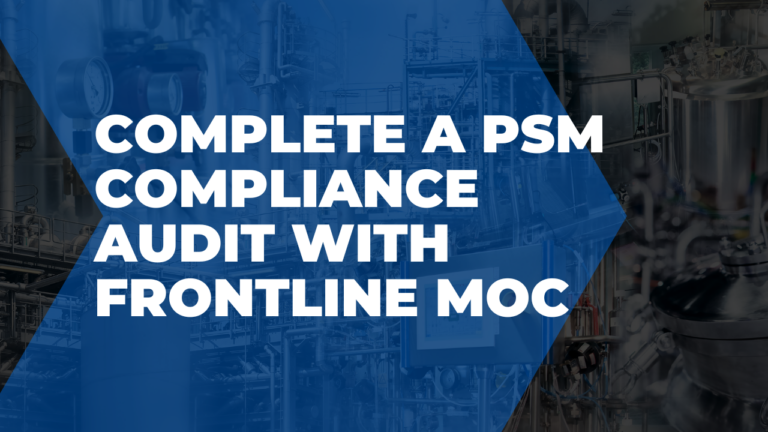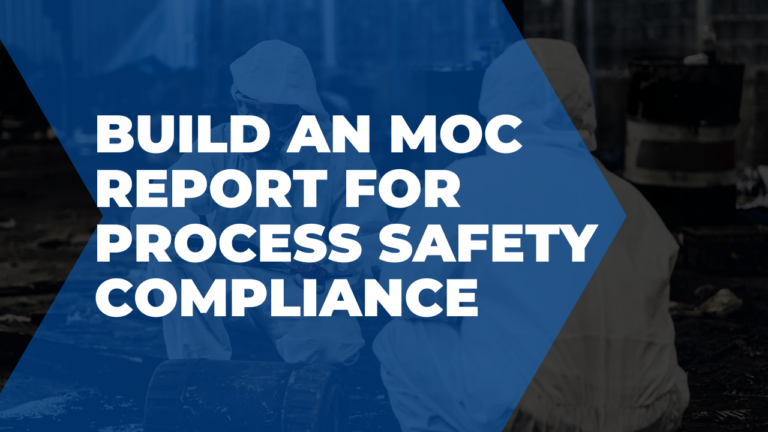PSM questions come up often in the health and safety field, given how overwhelming compliance can seem. If you break process safety management down into its separate parts, you’ll be able to see that although it’s long, it allows a lot of room for flexibility when it comes to creating a site-specific program for your company.
[Check out our PSM resource page for even more process safety information!]
Questions about the basics
Before you can achieve PSM compliance, you need to master the basics. These PSM questions cover the fundamentals knowledge you’ll need to achieve compliance.
What does PSM stand for?
In environmental, health, and safety, PSM stands for “process safety management.”
What is PSM?
Process safety management, or PSM, is an OSHA program that regulates the use of highly hazardous chemicals in industrial settings. It provides guidelines for the management of process chemicals, equipment, etc., that may affect workers’ health and safety.
What is the PSM standard?
The PSM standard is an OSHA regulation designed to prevent the unplanned release of highly hazardous chemicals. Within the standard are rules governing employee training, access to process safety information, change management, and more.
What is the purpose of PSM?
The purpose of PSM is to prevent accidental releases of highly hazardous chemicals. It does this by ensuring that the companies which use these chemicals properly analyze and control them for the wellbeing of their employees.
Why was PSM created?
OSHA created the PSM standard in 1992 after a series of major process safety incidents between the 1960s and 80s. One of the most significant accidents was the Bhopal disaster in India which exposed more than half a million people to toxic gases and caused thousands of deaths. From manufacturing to oil refinement, PSM covers a variety of industries and applications to prevent these incidents from happening again.
How many elements are there in process safety management?
There are 14 elements of PSM, which cover everything from employee training to incident investigation. Each paragraph of the standard is a separate element and has the requirements for that specific area of compliance.
What is an example of PSM?
PSM looks different for every company because compliance depends on specific work processes. Some examples of processes that require PSM programs include industrial ammonia refrigeration, oil and gas refinement, and chemical manufacturing.
PSM compliance is simpler with Frontline MOC
Check out our product videos to see the Frontline MOC system in action!
PSM compliance questions
Once you understand the basics of process safety management comes the hard part: compliance. The standard doesn’t provide specific instructions on how to achieve compliance. It just outlines the things you’ll need to do and have in place.
So, there’s room for interpretation when fulfilling the requirements. Here are a few PSM questions about compliance that may help you get started.
What falls under PSM?
PSM applies to processes that involve 10,000 pounds or more of flammable gases or liquids (except for hydrocarbon fuels consumed for operations). It also applies to processes that involve any of the materials listed on the highly hazardous chemical list.
What does process safety mainly deal with?
The concept of process safety mainly deals with hazard identification and control. At the root of PSM compliance is the need to conduct analyses to fully understand the hazards within a process so they’re easier to manage. Process safety allows companies to avoid health and safety incidents, as well as major operational failures from variables like equipment, weather, and more.
What is the PSM standard?
The PSM standard is 1910.119 Process safety of highly hazardous chemicals. It is the set of requirements and regulations set forth by OSHA for workplace management of highly hazardous chemicals.
What triggers PSM requirements?
Any time you introduce a new process or change an existing process that meets the PSM requirements, you’ll need to implement a program onsite. OSHA may conduct a PSM audit if your company has a recordable process safety incident as well.
Who is responsible for process safety?
Employers are responsible for implementing and managing process safety standards within their facilities. However, employee participation is one of the elements of PSM, meaning that every employee has a role to play in compliance.
Who oversees PSM?
OSHA oversees PSM enforcement while facility owner and operators are responsible for compliance. In most companies, the site’s EHS department manages the PSM program and ensures continued compliance by coordinating training, completing audits and hazard analyses, and maintaining updated documentation.
How do you implement process safety management?
Implementing a process safety management program can be difficult given that the standard has no clear instructions for how to do it. The use of MOC software can help with coordination and documentation of many of the PSM elements.
How often is a PSM audit required?
Under the compliance audit section in paragraph(o) of the standard, OSHA requires companies to complete a PSM audit at least once every three years.
Frontline MOC for PSM
Our management of change software, Frontline MOC, addresses many of the PSM questions we hear the most. The workflow in our platform includes both mandatory and optional steps. Having this flexibility allows our clients to use Frontline MOC for both PSM and non-PSM regulated processes.
If you’re interested in learning more about the solutions we provide, contact our sales team.
Other posts you might like…
No posts






